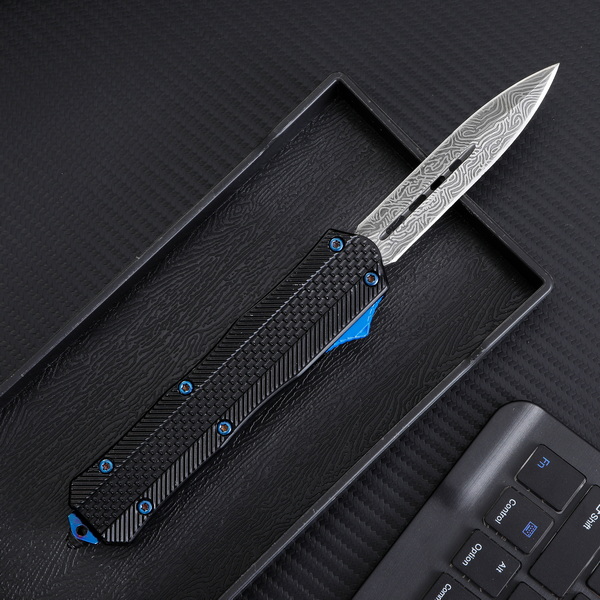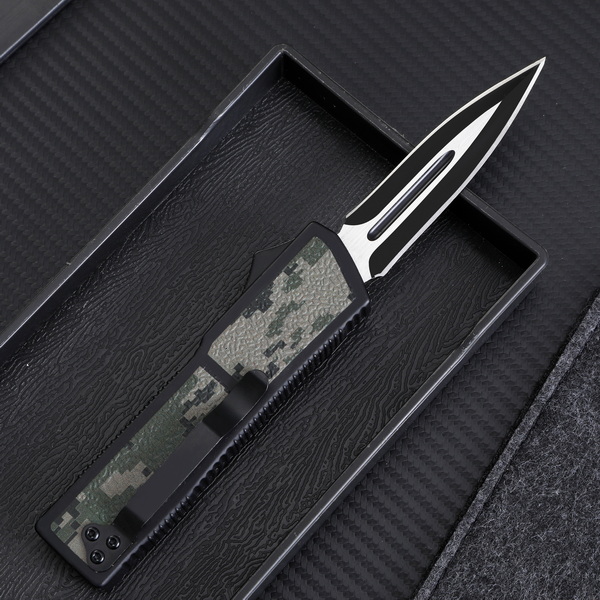Views: 222 Author: Leah Publish Time: 2025-10-25 Origin: Site











Content Menu
● Overview of OTF Knife Manufacturing
● Why Spain for OTF Knife Manufacturing?
● Top Spain-based Custom OTF Knives Manufacturers and Suppliers
>> Arcos Knives
>> Muela
>> Nieto
>> Cudeman
>> Pallarès
>> Aitor
● How to Choose a Custom OTF Knives Manufacturer in Spain
● OEM/ODM Collaboration Process
● Quality Assurance and Compliance
● Customer Success Stories and Case Studies
● Pricing, Lead Times, and MOQ
● How Foreign Brands Can Work with Spanish OEMs
● Frequently Asked Questions (FAQs)
>> 1) What is an OTF knife and how does it differ from a switchblade?
>> 2) Are OTF knives legal in Europe, and what compliance should I expect?
>> 3) Can Spanish manufacturers customize blade steel and finishes?
>> 4) What is the typical lead time for a custom OTF knife project?
>> 5) How can I protect my brand when working with a Spanish OEM?
Spain hosts a vibrant manufacturing landscape for outdoor gear and cutlery, including a robust ecosystem of Custom OTF (Out-The-Front) knives. This article surveys top custom OTF knives manufacturers and suppliers operating in Spain, highlighting capabilities, industries served, compliance, and how foreign brands can partner for OEM and ODM projects. While focusing on Spain-based players, the guide also discusses global supply chain considerations, quality assurance practices, and media assets that buyers expect, such as product galleries and demonstration videos. This piece uses practical sections, visuals, and media placement notes to help readers evaluate potential partners effectively.

- What is an OTF knife? An OTF knife features a blade that deploys and retracts through a slide mechanism or switch along the handle, offering rapid deployment and compact form.
- Core capabilities typical of Custom OTF Knives Manufacturers and Suppliers include blade steel selection, heat treatment, handle materials, finish options, coating, logo engraving, packaging, and compliance with regional safety standards.
- Common industries served: outdoor recreation, law enforcement, military, EMT, and civilian personal-use segments.
- Strategic logistics: Spain offers well-developed port access, proximity to European markets, and efficient distribution networks.
- Skilled workforce: A legacy of metalworking, toolmaking, and precision machining supports high-quality blade production.
- Quality standards: European regulatory frameworks encourage stringent QA and compliance, benefiting brands seeking reliable OEM/ODM partners.
- Market access: Spain-based manufacturers often collaborate within the broader EU supply chain, easing cross-border branding and certifications.
(Albacete, widely recognized for kitchen cutlery with precision manufacturing capabilities; some suppliers offer OEM/ODM services for broader knife ranges)
Capabilities: Steel selection, heat treatment, handle options, engraving, packaging customization.
(Albacete; renowned for outdoor, hunting, and survival knives)
Capabilities: MoVa-style high-carbon stainless steels, diverse handle materials (wood, horn, G10), durable sheath design, and OEM packaging.
(Toledo; long tradition in high-quality blades)
Capabilities: Tactical, survival, bushcraft, and hunting knife lines with premium steels; ergonomic handle options; customization for branding.
(Elgoibar region; known for outdoor and hunting blades)
Capabilities: Fixed blades and some folding models, collaboration on OEM designs, blade geometry customization, and coating options.
(Solsona region; historic brand with artisanal heritage)
Capabilities: Heritage-inspired designs, collaborative branding, wooden and composite handles, leather sheaths, and packaging customization.
(Navarra region; diversified knife producer)
Capabilities: Outdoor and tactical knives, steel options, coatings, and branding customization.
- Define your product requirements: blade steel type, thickness, blade length, deployment speed, locking mechanism, handle material, weight, finish, and branding elements.
- Assess capabilities: whether the supplier can support your exact blade geometry, heat treatment standards, coating options, and tolerances.
- Evaluate QA and compliance: ISO certifications, factory audits, and test protocols (edge retention, blade hardness, corrosion resistance, deployment reliability).
- Review OEM/ODM experience: past collaborations, ability to support packaging customization, and willingness to co-develop products.
- Verify supply chain reliability: lead times, minimum order quantities, component sourcing, and after-sales service.

- Discovery and concept: define target markets, use cases, and required certifications.
- Design and prototyping: CAD models, physical prototypes, and iterative testing.
- Tooling and mass production: establish molds, fixtures, and assembly lines; confirm tolerances and QA plans.
- Packaging and branding: custom boxes, manuals, and protective inserts reflecting brand identity.
- Compliance and import readiness: CE marking, country-specific requirements, and import documentation.
- Material quality: steel grade selection (e.g., high-carbon stainless steel variants), core hardness, and coating adherence.
- Mechanical reliability: deployment mechanism testing, blade retention, and lock-up strength.
- Surface finishing: corrosion resistance, edge retention, and finish durability.
- Documentation: traceability notes, batch records, and inspection reports.
- Safety standards: adherence to European directives for consumer blades and toy-like restrictions, where applicable.
- Brand collaboration: how a European outdoor brand partnered with a Spanish OEM to develop a signature line with unique handle materials and custom engravings.
- Private-label success: a distributor who introduced a line of durable, affordable OTF knives tailored to mid-range markets in multiple EU countries.
- Limited-edition program: a premium line featuring exotic woods, inlays, and laser-etched branding, produced in small batches with tight QA.
- Typical MOQs vary by model and customization level; discuss with suppliers for exact figures.
- Lead times depend on tooling, prototyping, and batch size; expect several weeks for prototyping and several weeks to months for mass production.
- Pricing drivers: steel choice, blade geometry, finish, coating, packaging, and branding requirements.
- Clear specifications: provide detailed drawings, material specs, and performance expectations.
- Pilot programs: start with small runs to validate quality and market fit before scaling.
- Intellectual property protection: ensure NDAs and IP rights are clearly defined before design handoffs.
- Logistics planning: establish shipping terms, packaging standards, and import documentation aligned with destination markets.
Partnering with a Spain-based Custom OTF Knives Manufacturer and Supplier offers access to European manufacturing excellence, rigorous QA processes, and the potential for efficient translation of brand concepts into high-performance products. By starting with clear specifications, validating through prototypes, and establishing robust packaging and branding, foreign brands can build an enduring collaboration that meets market demands while maintaining quality and compliance.

- An OTF knife deploys the blade through a sliding mechanism along the handle, while a switchblade deploys via a spring-activated mechanism. OTF knives emphasize one-handed deployment on the same axis as the blade travel.
- Legal status varies by country; European safety and consumer blade directives apply. Manufacturers typically provide CE-related documentation and safety test results if requested.
- Yes, most OEM/ODM suppliers offer a range of steel options, heat treatments, and coatings, plus customization for handles and engravings.
- Prototyping can take several weeks, with mass production timelines depending on tooling, capacity, and complexity, often ranging from a few weeks to a few months.
- Use NDAs, clearly defined IP rights, and detailed contractual terms covering design ownership, manufacturing rights, and quality acceptance criteria.